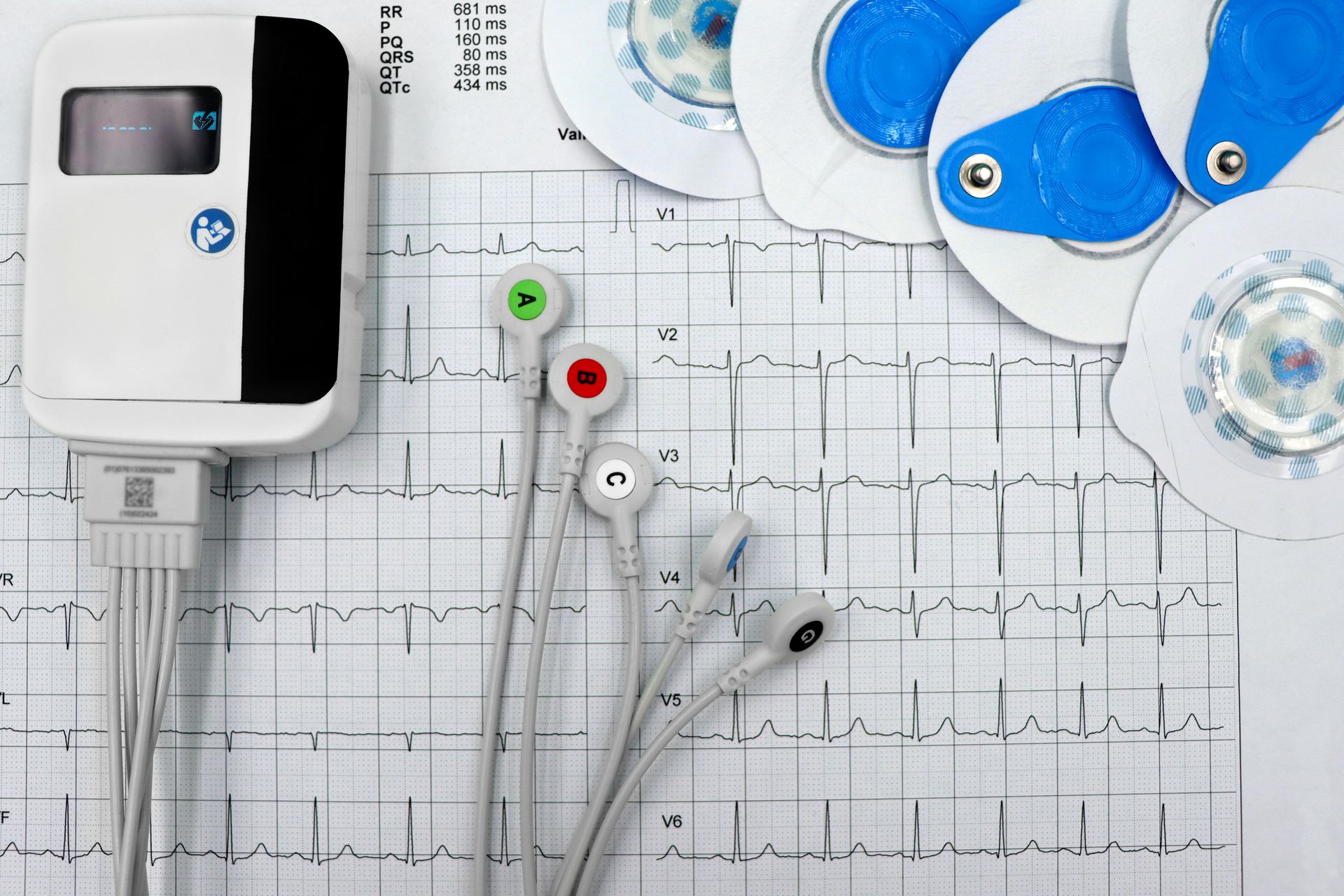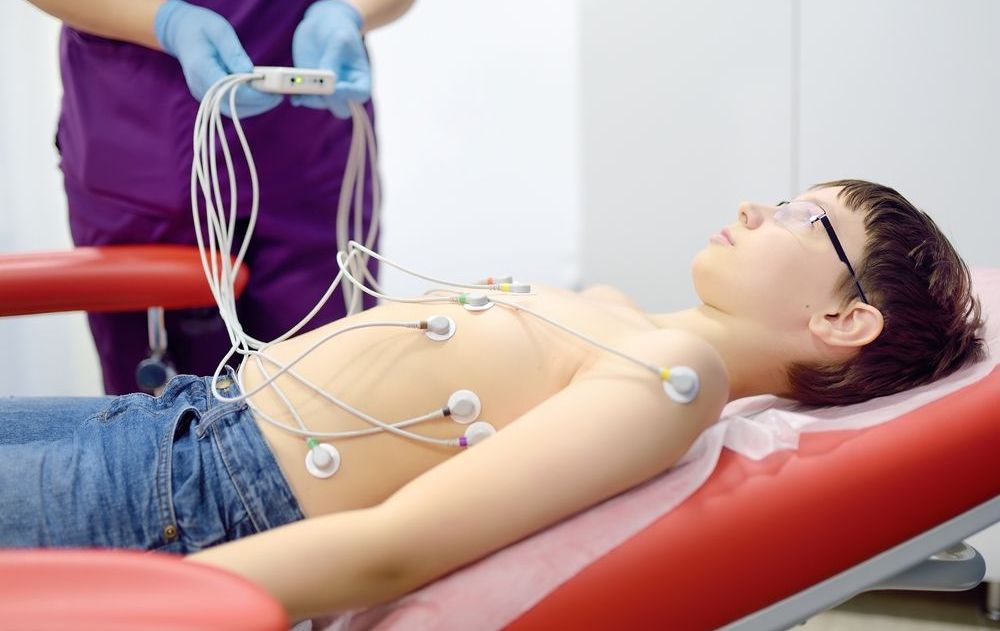12-Lead ECG
The ECG records any unusual heartbeats, signs of a heart attack, or other issues with heart function. This test is standard, non-invasive, and only takes a few minutes.
Benefits of a 12-Lead ECG
A 12-lead ECG can help by:
- Finding heart problems early: It can detect signs of heart disease before symptoms worsen.
- Providing a detailed look at the heart: The test shows if there are any irregularities in the heart’s electrical activity.
- Being quick and non-invasive: The ECG is easy, takes a few minutes, and does not involve injections.
- Helping guide treatment: The results give doctors essential information for necessary care or follow-up tests.
Preparing Your Child for a 12-Lead ECG
There’s little preparation needed for an ECG, but a few simple steps can help:
- Dress Comfortably: Loose clothes make placing the electrodes on the chest easy.
- Avoid Lotions: Skip applying lotions or oils on the chest, as these can affect the electrodes.
- Stay Calm. The best results come from a relaxed heart rate, so encourage your child to rest before the test.
What to Expect During a 12-Lead ECG
- Preparation: Your child will lie on an exam table and may need to remove clothing from the waist up.
- Electrode Placement: The technician will place ten small electrodes on your child’s chest, arms, and legs.
- Recording: Your child will lie still while the machine records their heart's activity. This only takes a few minutes.
- Completion: The technician removes the electrodes, and your child can get dressed and resume normal activities.

What Happens After the Test?
- Immediate Results: Results are often available immediately, and the doctor will explain whether any follow-up is needed.
- No Side Effects: ECGs are non-invasive, so there’s no recovery time or lasting effects.
What Happens After the ECG?
The results are recorded as a graph of lines, which your child’s doctor will review.
If the ECG is part of routine monitoring, the doctor will explain if the heart is functioning normally or if further testing or treatment is needed.
If it was done because of symptoms like chest pain or palpitations, the doctor will use the results to determine the cause and decide the next steps in care.
Reassurance for Parents
A 12-lead ECG is a safe, noninvasive test that provides valuable insights into your child’s heart health. It’s quick and causes no pain, making it straightforward for detecting potential issues or confirming that the heart is working well.
If you have any concerns or questions about the procedure, don’t hesitate to ask your child’s healthcare provider for more information. They support you and ensure your child’s heart is healthy and strong.
Common Findings from a 12-Lead ECG
- Normal Heart Function: A normal ECG means the heart functions well, though regular monitoring might still be recommended.
- Irregular Heartbeats (Arrhythmias): If irregular rhythms are found, further testing may be needed to determine if treatment is necessary.
- Heart Attack Signs: If signs of a heart attack are present, prompt treatment will be initiated.
- Heart Muscle Thickening: Thickened heart muscle (often from high blood pressure) can be managed with lifestyle and medication changes.
- Electrical Signal Delays: The ECG might reveal signal delays, like bundle branch blocks, which may need further assessment but are sometimes harmless.
Risks of a 12-Lead ECG
A 12-lead ECG is very safe, but:
- Minor Skin Irritation: Some children may experience mild skin irritation from the electrodes.
- Discomfort with Removal: Removing the electrodes can be mildly uncomfortable if there is body hair, but it is brief.
What if the ECG is Delayed?
If an ECG is delayed, it could impact care by:
- Missing Heart Issues: The test might reveal important heart issues that would benefit from immediate attention.
- Delaying Treatment: Without ECG results, necessary treatments or further tests could be delayed, which is critical for severe symptoms.
Why an ECG Matters
A 12-lead ECG provides essential insights into your child’s heart health. It’s a quick, painless, and effective tool for detecting and monitoring heart issues early, helping ensure your child receives the best care.


